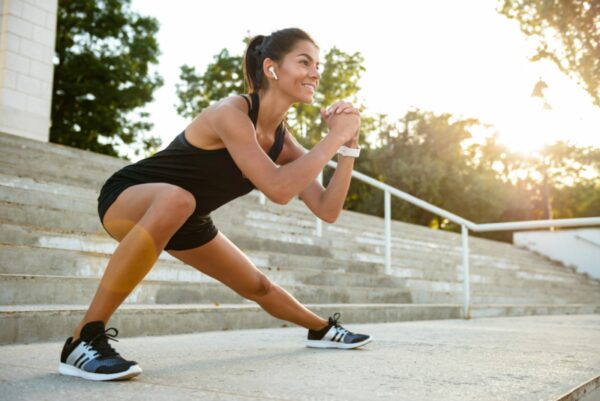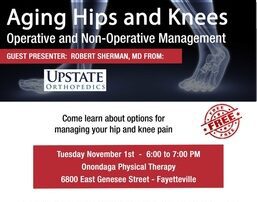
If you’ve been to physical therapy, you likely got a home exercise program. Research says that if you do your home exercise program, you’ll have a significantly better chance of meeting your goals and feeling better. Not doing your program increases the risk of recurrent injury or flare-ups with less positive outcomes long term. Even though they’re important, adherence to home exercise programs is terrible. It’s estimated that only 40 to 50% of patients do their exercises the way they’re supposed to. What can you do to make sure you do your exercises and get the best outcomes? Here are a few ideas.
Plan Ahead
Think about what’s going to get in your way – your schedule, that you’ll forget, or that you don’t have the space or equipment that you need. Once you figure out the problems, come up with solutions. Put your exercises in your schedule, talk to your PT about equipment, or adjusting your program to fit the time you have. If you solve problems before they start, they’re no longer problems.
Address Pain and Beliefs About The Exercise Program
You’ll need to work with your PT on these. If your exercises cause pain, you’re not going to do them. When your PT prescribes your exercises, try them out. If there’s pain, ask your PT about modifications to make them more comfortable.
The other thing that might need to be addressed are your beliefs. If you believe that the exercises won’t help, or that they’re a waste of time, you won’t do them. Again, work with your PT to understand why they’re prescribing those exercises, and what they’re meant to do. Once you know why you’re doing those exercises, you’re more likely to do them.
Get Support
People who have social support are more likely to do their exercises. This is why CrossFit and group exercise classes work. Find a family member or friend to help you stay consistent with your exercises. Your PT can help here too. Have someone ask if you’re doing your exercises, and how they’re going. This will keep you accountable and more likely to do them.
Use Technology
If you like technology and gadgets, they can help you be consistent with your exercises. There are plenty of apps that can track your exercise. Seeing that streak of days you’ve exercised will motivate you not to break it. Smartwatches and activity trackers can fill the same role. If you are one of our patients, we provide you with the technology to track and monitor your own compliance and progress within Keet. You can even communicate with your therapist, getting answers to questions and concerns to keep you motivated and committed to the program between visits.
If you want the best outcomes and the best that PT has to offer, doing your home exercise program will help you get the most out of PT. With a little planning and a little help, you can make sure you’re one of the 50% of the people who do their home exercises consistently to get the best outcomes.
*References:
https://pubmed.ncbi.nlm.nih.gov/32669487/
https://www.physio-pedia.com/Adherence_to_Home_Exercise_Program
Keep Reading…
SLOW THE PROGRESSION OF ARTHRITIS WITH NUTRITION
Slowing the Progression of Arthritis
It is increasingly apparent that what is healthy for one’s heart is also good for one’s aching joints and knees. Current research links significant associations between the types of dietary fat intake with structural progression of knee osteoarthritis. Osteoarthirits (OA) also known as degenerative joint disease (DJD) is the most common chronic condition of the joints affecting more than 3 million people a year or 27 million Americans. One in two adults will develop symptoms of OA in their lifetime (Arthritis Foundation, 2016). Common risk factors for developing arthritis include increasing age, previous joint injury, obesity, joint overuse, weak supporting muscles, and genes.
However, top researchers in the field of nutrition science affirm that following a healthy diet may be an effective strategy for the management of knee osteoarthritis. Furthermore, following a healthy diet and lifestyle is by far more attractive than medications with respect to (long term) risks/benefits. The results of the following study offer hope for individuals searching for steps to limit the progression of OA.
TOP 10 REASONS TO CHOOSE PT FIRST
Do more than mask the pain, reduce or eliminate it.
Exercise and manual therapy (including soft tissue and joint mobilizations) can help relieve pain, restore mobility and function and help reduce or eliminate pain. Pain is often cyclical and can be minimized or eliminated with musculoskeletal mobility.
Learn how to help treat yourself and become empowered with your care
There really isn’t a magic wand at PT! A Physical Therapist will do more than just address your injury or involved body part. We will look at you as a whole person and empower you with your care, giving you plenty of education and ways you can help yourself.
Become more active!
Learn to care for your body instead of suffer. There are so many studies that show that activity for 30 minutes per day helps to maintain healthy systems, from head to toe. A Physical Therapist promotes total health and wellness and can often be a good motivator to get you on track with your goals!
Prevent surgery
Often times, musculoskeletal injuries can be treated by PT and you can avoid surgery all together. The key is to get to know a PT soon after an injury so your pain and limitations do not become irreversible. Talk with your physician ASAP!
Free Community Education Seminar: Hip and Knee Pain
Join us for Hip and Knee Pain - the next seminar in our Free Community Education Series. This interactive seminar will feature Robert Sherman, MD of Upstate Orthopedics and Onondaga Physical Therapy's Taryn Bader, PT.
WHY AM I LOSING MY BALANCE?
Is it because I am getting older? As we age, our body changes. Our reflexes slow down and our nerve signals are not quite as fast to alert us to make a correction when we lose our balance. Balance is essential to our everyday routine – from getting dressed to taking the dog for a walk, to cooking a meal. Most of the time you don’t have to think about balance – but when you do, it can become frustrating. The feeling of being unsteady can lead to inactivity. Individuals tend to withdraw from their favorite activities or decline invitations due to a fear of falling. The less you do the weaker balance will become and risk for falls will increase. What a vicious cycle!






